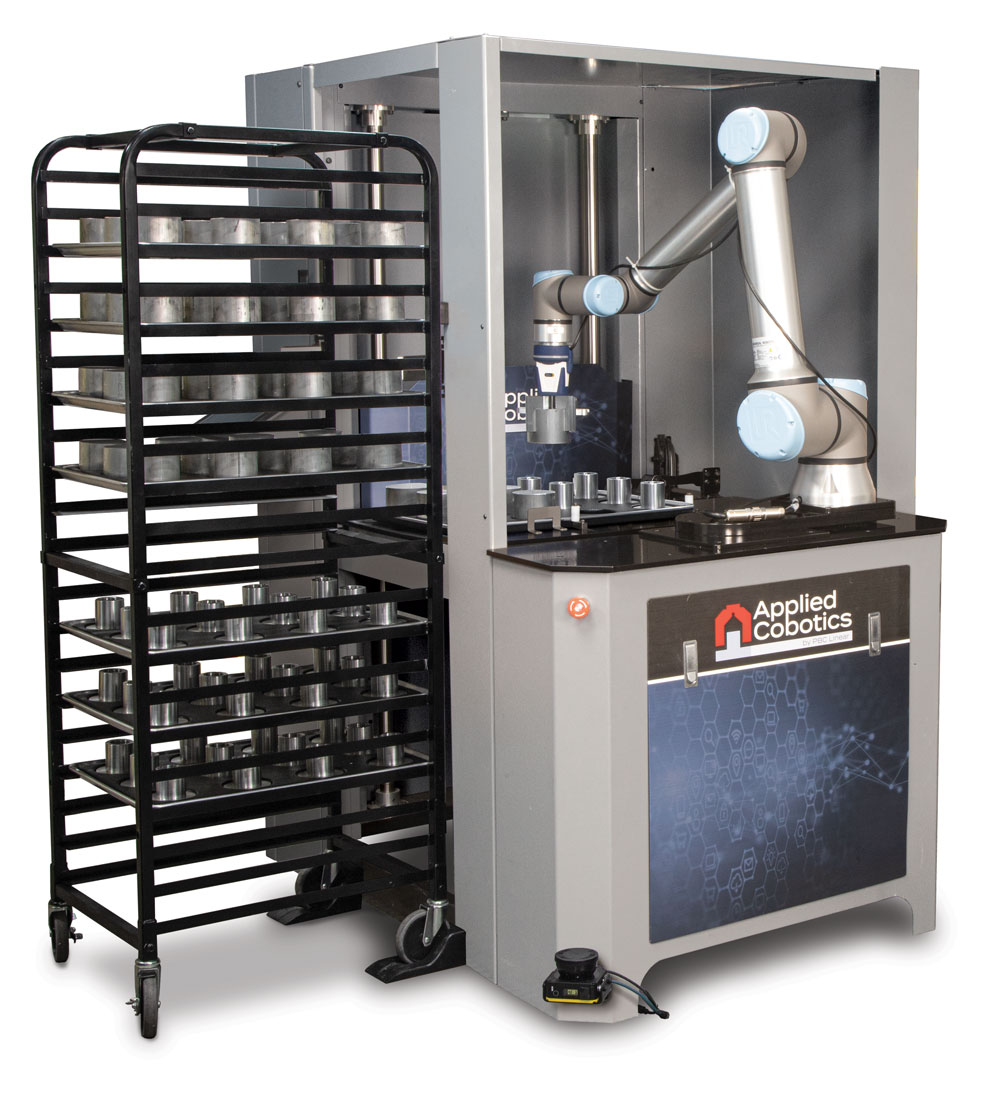This automation package provides solutions to these common core challenges:
Our experiences with cobot automation illustrates how essential it is to have a unique machine like the Automated Storage and Retrieval System. This is especially poignant when considering how the pandemic has amplified the shortage of skilled workers and exposed a supply chain fraught with severe backlogs and delays.
The ASRS from Applied Cobotics, in tandem with cobots, has been incredibly successful on the shop floor, especially with processes that require highly repetitive tasks. PBC Linear has implemented the ASRS and cobots to great effect on the CNC mills and lathes that produce their signature bearings. With roughly 80 CNC machines in their shop and 15 cobot stations in operation, the ASRS has boosted cobot production up to 1600%, and created a more flexible manufacturing model while elevating profits.

Below are three videos that feature a round table discussion involving the creative engineers behind the development of the ASRS. Their comments give a persuasive, experience-driven set of reasons for investing in ASRS technology from Applied Cobotics.
The biggest issue that this machine is solving is cobot downtime. How do you improve automation efficiency? Often, lot sizes are gauged for a single shift of work. The reality is that a job rarely finishes within the allotted time. In essence, a five-day job can often really take eight or nine days to complete. The ASRS allows those jobs to finish overnight (run 24-7), so that every day is a fresh set-up, and each job stays in step with the production schedule.
The ASRS was the tool that was missing from the equation. What happens when your cobot runs out of parts? Nothing, unless you have the ASRS from Applied Cobotics. Machine operators can load several machines and then either check on the quality of parts or go to lunch while the cobot and ASRS continue to operate during breaks or overnight. This means no more babysitting machines and instead maximizing your manufacturing productivity.
PBC Linear was able to increase sales by 33%, while only increasing head count by 3%. How do you keep up with increasing productivity demands in an era of labor shortages? The greatest benefits of the ASRS are not only that you can automatically cycle through seventeen trays of parts, but that those trays are fully capable of incorporating a high mixture of part configurations. This greatly reduces the amount of setup and changeover time required, offering greater efficiency on the shop floor and a quicker return on your investment.
The ASRS, in tandem with robots, helps drive a complete automation system, offering substantial benefits to company leaders that includes: